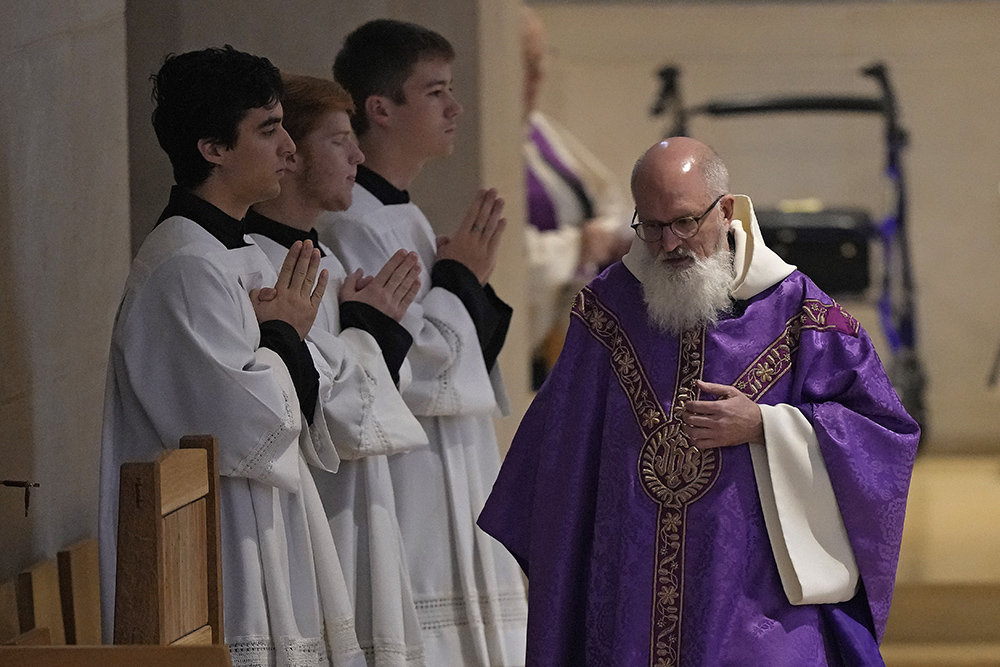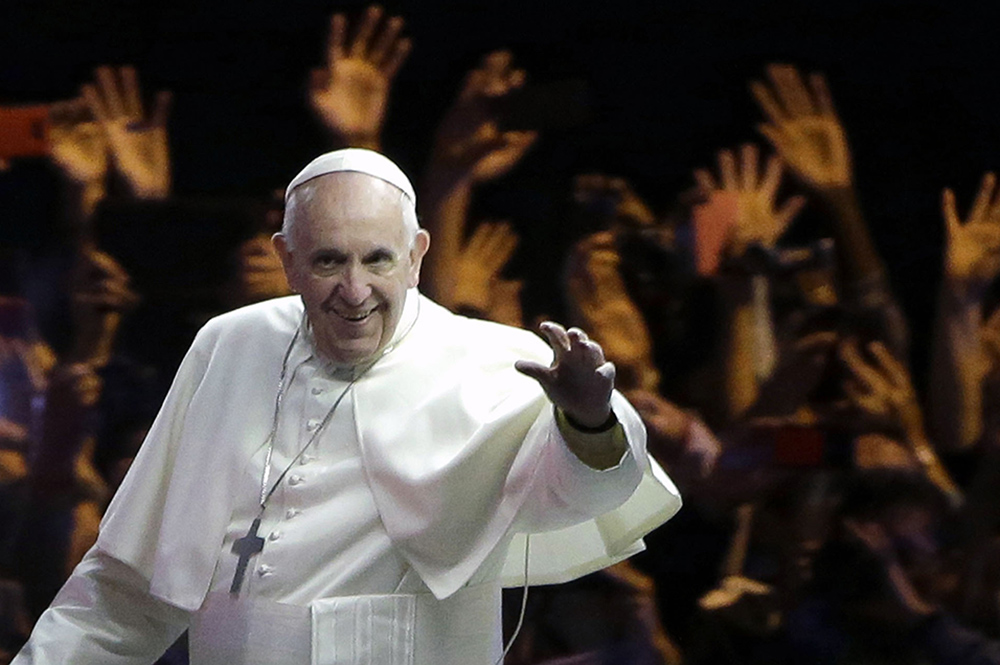In the shadows of scandal and corruption, a silent resistance has been gathering strength, fueled by the unyielding dedication of Catholic Church’s unsung heroes. These modern-day champions of faith have been quietly working behind the scenes, driven by an unwavering passion to restore the Church’s integrity and credibility. As the institution faces its greatest crisis of confidence, these hidden heroes are rising to the forefront, bringing hope and renewal to a community torn apart by disillusionment and doubt. Who are these courageous individuals, and what drives them to fight for the soul of the Catholic Church?
Fading Liberalism

The Shift in Music: A Warning Sign
It was the music that changed first. Or maybe that’s just when many people at the pale brick Catholic church in the quiet Wisconsin neighborhood finally began to realize what was happening. The choir director, a fixture at St. Maria Goretti for nearly 40 years, was suddenly gone. Contemporary hymns were replaced by music rooted in medieval Europe. So much was changing.
Sermons were focusing more on sin and confession. Priests were rarely seen without cassocks. Altar girls, for a time, were banned. At the parish elementary school, students began hearing about abortion and hell.
A Changing Parish: St. Maria Goretti’s Transformation
“It was like a step back in time,” said one former parishioner, still so dazed by the tumultuous changes that began in 2021 with a new pastor that he only spoke on condition of anonymity.
It’s not just St. Maria Goretti. Across the U.S., the Catholic Church is undergoing an immense shift. Generations of Catholics who embraced the modernizing tide sparked in the 1960s by Vatican II are increasingly giving way to religious conservatives who believe the church has been twisted by change, with the promise of eternal salvation replaced by guitar Masses, parish food pantries and casual indifference to church doctrine.
The Rise of Conservative Catholics
The Demographic Shift: Younger Priests, Traditional Values
The progressive priests who dominated the U.S. church in the years after Vatican II are now in their 70s and 80s. Many are retired. Some are dead. Younger priests, surveys show, are far more conservative.
“They say they’re trying to restore what us old guys ruined,” said the Rev. John Forliti, 87, a retired Twin Cities priest who fought for civil rights and reforms in Catholic school sex education.
The Backlash Against Progressive Priests
Doug Koesel, an outspoken 72-year-old priest at Blessed Trinity Parish in Cleveland, was blunter: “They’re just waiting for us to die.” At St. Maria Goretti, once steeped in the ethos of Vatican II, many parishioners saw the changes as a requiem.
“I don’t want my daughter to be Catholic,” said Christine Hammond, whose family left the parish when the new outlook spilled into the church’s school and her daughter’s classroom. “Not if this is the Roman Catholic Church that is coming.”
But this is not a simple story. Because there are many who welcome this new, old church. They often stand out in the pews, with the men in ties and the women sometimes with the lace head coverings that all but disappeared from American churches more than 50 years ago.
A Generational Divide: The Legacy of Vatican II
It was the music that changed first. Or maybe that’s just when many people at the pale brick Catholic church in the quiet Wisconsin neighborhood finally began to realize what was happening. The choir director, a fixture at St. Maria Goretti for nearly 40 years, was suddenly gone. Contemporary hymns were replaced by music rooted in medieval Europe. So much was changing. Sermons were focusing more on sin and confession. Priests were rarely seen without cassocks. Altar girls, for a time, were banned. At the parish elementary school, students began hearing about abortion and hell. “It was like a step back in time,” said one former parishioner, still so dazed by the tumultuous changes that began in 2021 with a new pastor that he only spoke on condition of anonymity.
Generations of Catholics who embraced the modernizing tide sparked in the 1960s by Vatican II are increasingly giving way to religious conservatives who believe the church has been twisted by change, with the promise of eternal salvation replaced by guitar Masses, parish food pantries and casual indifference to church doctrine. The shift, molded by plummeting church attendance, increasingly traditional priests and growing numbers of young Catholics searching for more orthodoxy, has reshaped parishes across the country, leaving them sometimes at odds with Pope Francis and much of the Catholic world.
Fading Voices: The Retirement and Passing of Liberal Priests
The progressive priests who dominated the U.S. church in the years after Vatican II are now in their 70s and 80s. Many are retired. Some are dead. Younger priests, surveys show, are far more conservative. “They say they’re trying to restore what us old guys ruined,” said the Rev. John Forliti, 87, a retired Twin Cities priest who fought for civil rights and reforms in Catholic school sex education. Doug Koesel, an outspoken 72-year-old priest at Blessed Trinity Parish in Cleveland, was blunter: “They’re just waiting for us to die.”
At St. Maria Goretti, once steeped in the ethos of Vatican II, many parishioners saw the changes as a requiem. “I don’t want my daughter to be Catholic,” said Christine Hammond, whose family left the parish when the new outlook spilled into the church’s school and her daughter’s classroom. “Not if this is the Roman Catholic Church that is coming.”
The New Orthodoxies
Restoring Tradition: Latinity, Incense, and Gregorian Chants
They often stand out in the pews, with the men in ties and the women sometimes with the lace head coverings that all but disappeared from American churches more than 50 years ago. Often, at least a couple families will arrive with four, five or even more children, signaling their adherence to the church’s ban on contraception, which most American Catholics have long casually ignored. They attend confession regularly and adhere strictly to church teachings. Many yearn for Masses that echo with medieval traditions — more Latin, more incense, more Gregorian chants. “We want this ethereal experience that is different from everything else in our lives,” said Ben Rouleau, who until recently led St. Maria Goretti’s young adult group, which saw membership skyrocket even as the parish shrank amid the turmoil.
Unwavering Adherence: Families and Young Adults Embracing Conservatism
They are, Rouleau said, happily out of touch with a liberal city like Madison. “We want this ethereal experience that is different from everything else in our lives,” said Ben Rouleau, who until recently led St. Maria Goretti’s young adult group, which saw membership skyrocket even as the parish shrank amid the turmoil.
Practical Implications
A Parish in Turmoil: The Human Cost of Change
But this is not a simple story. Because there are many who welcome this new, old church. They often stand out in the pews, with the men in ties and the women sometimes with the lace head coverings that all but disappeared from American churches more than 50 years ago. Often, at least a couple families will arrive with four, five or even more children, signaling their adherence to the church’s ban on contraception, which most American Catholics have long casually ignored.
Finding Common Ground: Can Liberal and Conservative Catholics Coexist?
Many yearn for Masses that echo with medieval traditions — more Latin, more incense, more Gregorian chants. “We want this ethereal experience that is different from everything else in our lives,” said Ben Rouleau, who until recently led St. Maria Goretti’s young adult group, which saw membership skyrocket even as the parish shrank amid the turmoil.
Conclusion
In conclusion, the Catholic Church’s struggles to regain its moral standing has led to the emergence of hidden heroes who are fighting back against the forces of corruption and abuse. Through the stories of whistleblowers, advocates, and reformers, we have seen that the Church is not just a monolithic institution, but a complex web of individuals who are committed to justice, accountability, and transparency. The Church’s efforts to address its past wrongdoings, from the sexual abuse crisis to financial scandals, are a testament to its capacity for self-reflection and growth.
The implications of this fight are far from trivial. As the Church continues to grapple with its internal demons, it also confront the external challenges of a rapidly changing society. The rise of secularism, the decline of traditional religiosity, and the growing mistrust of institutions all require the Church to adapt and evolve. The hidden heroes of the Church are not just fighting for the Church’s survival; they are fighting for the very soul of humanity. They are reminding us that even in the darkest of times, there is always hope, always a chance for redemption and forgiveness.
As we move forward, we are reminded that the Catholic Church is not an island unto itself. Its struggles and triumphs have far-reaching consequences for all of us. The fight for accountability, transparency, and justice is a fight that transcends religious boundaries. It is a fight for our shared humanity. And so, let us heed the call of the hidden heroes of the Catholic Church, and join them in their quest for a better, more just, and more compassionate world. For in the end, it is not the institutions that will save us, but our collective humanity, and our unwavering commitment to the pursuit of truth, justice, and love.
